Premium Only Content
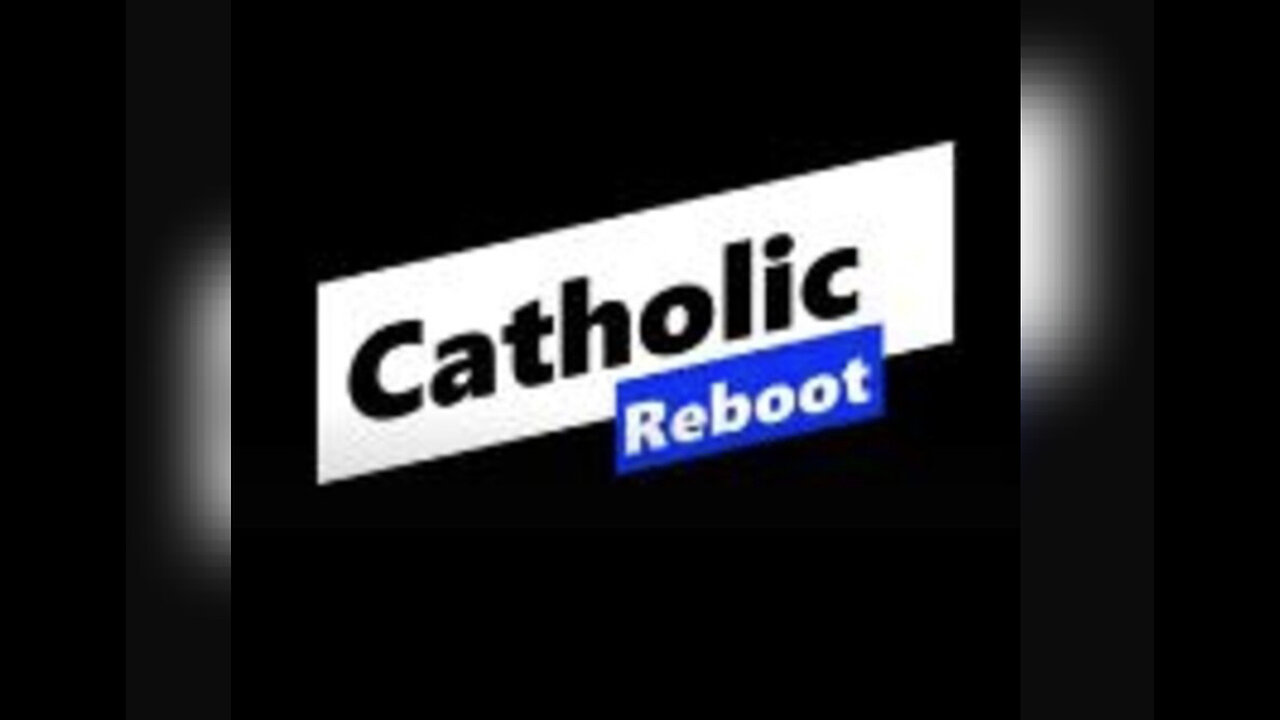
Episode 3169: Three Papal Errors the Collapse of Catholicism
Nightly Zoom Coordinates for Rosary:
Meeting ID: 865 8978 0399
Passcode: Wjjv4960!
Speak Lord for your Servant is Listening
Book Recommendation of the Day
"The Transfiguration of Christ"
By: Dom Anscar Vonier, OSB
• A theological and spiritual reflection on the mystery of the Transfiguration.
• Rich in patristic insight and Thomistic clarity, Vonier explores how the Transfiguration points to Christ’s divinity, the Beatific Vision, and the glory prepared for the faithful.
• Traditional and deeply meditative.
• Highly recommended for traditional Catholics.
You know me an 2 other siblings help take care of my mom over night so my father can get some rest and some nights are tougher than others. My night was last night and it wasn’t a very good night. You get in your mind you just wont get sleep and its better that way. Well last night was one of those nights. But you just have to offer it up and push through it. So this morning as I was putting this episode together I wasn’t in the best form a did the entire episode only to find out the episode didn’t record and I have to tell you I have been having some pretty unusual technology issues over the this past week. Computer that seems to lose it log in only to cause me to do a complete back up and reformat and weirdly a day later everything came back as if I never reformatted. So, if you don’t think the devil isn’t coming at you when you perform acts of charity or encourage the faithful to protect holy mother church you have something to learn. It’s through life’s trials that we really practice the faith. Today is a great example of that. From Mt Tabor to Calvary. You need the cross! And the state of our church and the crosses we the faithful have been forced to endure since Vatican II sometimes can seem impossible to overcome but just when we want to stop and give up we have to remember what Christ showed us on this feast day. The beatific vision comes but it requires us to take up our cross in our daily lives and the especially in the life of the church.
“Three Papal Errors: The Collapse of Catholicism”
Introduction: The Crisis Foretold
From the front lines of the battle for the soul of Holy Mother Church. Today’s episode is not for the faint of heart. We step into controversial waters guided by the insights of Fr. Malachi Martin a man who, from the heights of the Vatican’s inner workings, foresaw a decline in Catholicism not driven by outside forces, but by the papacy itself.
While the office of the papacy is divinely instituted and protected in its dogmatic definitions, the men who occupy it are not impeccable. In fact, history is filled with popes who have erred in prudence, discipline, policy and in recent decades, according to Martin some have opened the gates to modernism.
Who are these three popes?
• One opened the door to modernism,
• Another institutionalized it,
• And the third globalized the disaster.
We explore this from a traditional Catholic perspective, rooted in scripture, tradition, and the witness of saints.
Malachi Martin: Prophet or Alarmist?
Before naming the popes, we must ask who was Fr. Malachi Martin?
A former Jesuit, linguist, exorcist, and Vatican insider, Martin served under Cardinal Bea during the pontificate of Pius XII. He was present at Vatican II and later became disillusioned with the direction the Church took.
He authored over a dozen books, including:
• Hostage to the Devil (on exorcisms)
• The Jesuits (an exposé of their betrayal)
• The Keys of This Blood (a geopolitical look at the Vatican)
• Windswept House (a fictionalized yet chillingly accurate look at diabolical infiltration)
Martin claimed to have read the Third Secret of Fatima and warned of a “Luciferian enthronement” in the Church.
“The Church is undergoing her Passion. Just as Christ was betrayed from within, so too is the Bride of Christ.”
-Malachi Martin
Pope John XXIII – The Pastoral Shift Begins
Known as “Good Pope John,” Angelo Roncalli became Pope John XXIII in 1958. While beloved by many for his gentleness, Malachi Martin viewed him as the first major contributor to the Church’s decline.
What went wrong?
• Called Vatican II with an ambiguous goal: “Opening the windows of the Church.”
• Ignored Our Lady of Fatima’s command to release the Third Secret in 1960.
• Removed focus from doctrine and condemnation of error, opting instead for dialogue.
Martin believed John XXIII refused Heaven’s request and replaced it with his own vision of humanistic optimism. He trusted that man could solve problems through progress and fraternity, not repentance and conversion.
Quoting John XXIII:
“We feel we must disagree with these prophets of doom who are always forecasting disaster.”
But those prophets like Fatima, Blessed Anne Catherine Emmerich, and St. Maximilian Kolbe warned of a coming apostasy. Martin believed John XXIII dismissed divine warnings for human optimism.
Saintly Contrast:
• St. Pius X, in Pascendi Dominici Gregis, condemned Modernism with laser clarity and implemented the Oath Against Modernism.
• John XXIII let that Oath die quietly. And with it, the defenses were lowered.
Segment 3: Pope Paul VI – The Great Architect of Rupture
Giovanni Battista Montini, or Pope Paul VI, succeeded John XXIII and presided over the conclusion and implementation of Vatican II.
Malachi Martin believed Paul VI delivered the Church into the hands of revolutionaries not because he desired destruction, but because he was weak and indecisive.
His catastrophic choices:
1. Promulgated the Novus Ordo Missae in 1969.
o Engineered by Archbishop Bugnini, with the influence of six Protestant ministers.
o Removed sacrificial and priestly language, downplayed the Real Presence.
o Martin called it a “Protestantized banquet” rather than a holy sacrifice.
2. Suppressed the minor orders, breaking the continuity of clerical formation.
3. Oversaw mass laicization, religious exodus, and a spiritual implosion.
4. Ignored warnings from theologians, mystics, and even internal cardinals.
Paul VI admitted in 1972:
“From some crack the smoke of Satan has entered the Church of God.”
Martin believed that crack was the Council’s implementation, shaped by progressives and freemasonic infiltration something Our Lady warned against at La Salette and Fatima.
Saintly Contrast:
• Pope St. Pius V, in Quo Primum, made the Tridentine Mass binding in perpetuity.
• Paul VI effectively abrogated it not formally, but practically.
Segment 4: Pope John Paul II: The Globalized Catholicism
Malachi Martin respected Karol Wojtyła’s courage against communism, but saw in John Paul II a tragic failure to reverse course.
What did he do?
• Globalized the post-conciliar confusion.
• Allowed bishops’ conferences to operate independently, spreading liturgical abuse and doctrinal dissent.
• Failed to discipline notorious heretics (Hans Küng, Charles Curran, feminist theologians).
• Engaged in ecumenical scandals:
o Assisi Prayer Meetings: Buddhists, Hindus, shamans performing rites in Catholic churches.
o Kissed the Qur’an, which explicitly denies the Trinity.
Martin believed John Paul II chose peace with the world over truth.
His repeated travels, beloved status, and public image masked the internal rot: collapsing vocations, closed seminaries, dissenting clergy, and confused laity.
“He brought the Vatican to every continent, but not the Deposit of Faith.”
—Malachi Martin
Segment 5: The Fruits of These Errors
The combined effect of these three papacies:
• Liturgical chaos and loss of the sense of the sacred.
• Doctrinal confusion as most Catholics today reject core teachings on the Eucharist, marriage, and salvation.
• Moral collapse in seminaries and religious life.
• Abandonment of the missionary mandate, replaced with ecumenism and interreligious dialogue.
• Rise of globalism in place of Christ the King.
Martin believed this trajectory culminated in a Church ripe for diabolical infiltration a theme he dramatized in Windswept House.
Segment 6: What Must We Do Now?
Despite the dire warnings, Martin offered hope.
He believed a remnant Church would remain faithful, anchored in Tradition.
Here’s what we must do:
1. Stay rooted in the Traditional Latin Mass.
o It protects doctrine through its form.
2. Read and live by the saints:
o St. Pius X, St. Alphonsus, St. Thomas Aquinas, St. John of the Cross.
3. Teach our children the true Faith.
o Use the Baltimore Catechism, old Missals, and lives of saints.
4. Form Catholic communities centered around Tradition.
5. Pray for our clergy that they may have the courage of Athanasius and the zeal of Dominic.
6. Consecrate ourselves to the Immaculate Heart of Mary.
“In the end, my Immaculate Heart will triumph.” Our Lady of Fatima
Today we celebrate one of the most awe-inspiring feasts of the liturgical year: The Transfiguration of Our Lord Jesus Christ. It is a moment of glory brief, dazzling, and profound where Christ reveals to three of His apostles a foretaste of His divine majesty. But it is also a solemn preparation for suffering. It is no coincidence that this vision of glory precedes His Passion.
This feast reminds us that suffering and glory are not enemies, but companions in the Christian life. In a world where many Catholics have been taught to expect comfort, safety, and sentimentality from religion, the Transfiguration stands as a luminous contradiction. Yes, Christ is radiant and divine but He also descends the mountain to face betrayal, agony, and the Cross.
This is the paradox of our faith: glory comes through the Cross. And for Traditional Catholics, this message rings especially true. In our fight to preserve reverent worship, defend doctrine, and endure spiritual exile in a Church that often rejects its own patrimony, we must keep our eyes fixed on the glorified Christ. The Traditional Latin Mass, the devotions of our ancestors, the doctrine of the saints these are not burdens, but foretastes of Tabor amid a Calvary-bound world.
Epistle Reflection – 2 Peter 1:16–19
“For we have not followed cunningly devised fables... but we were eyewitnesses of His majesty. For He received from God the Father honor and glory... This voice we heard brought from heaven, when we were with Him on the holy mount.”
St. Peter speaks with apostolic authority not about abstract theology or philosophical ideas but about what he saw with his own eyes. The Church is not built on speculation, but on witness. The Apostles beheld the Transfiguration of Christ. They saw His divinity unveiled, even if only briefly, shining brighter than the sun. And they heard the voice of the Father: “This is My beloved Son, in whom I am well pleased.”
St. Peter urges us to cling to this truth, to remain firm in it, like a lamp shining in a dark place. What timely words for us today! For the modern Church too often embraces the world’s “fables” dialogue without doctrine, inclusion without conversion, pastoral care without truth. But Peter reminds us: we must hold fast to the light, not chase every novelty or trend.
Our Faith is not manmade; it is revealed. It is not a tradition of men, but the Tradition of Christ passed through the Apostles. And so we must preserve it with the same zeal with which Peter proclaimed it even unto martyrdom.
Gospel Reflection – Matthew 17:1–9
“And He was transfigured before them. And His face did shine as the sun, and His garments became white as snow.”
This Gospel stuns the imagination. The eternal light of the Second Person of the Trinity bursts forth from the humble humanity of Jesus. Standing with Him are Moses and Elias representing the Law and the Prophets, both testifying to the Divine Christ.
But what is most striking is the response of the Apostles. Peter, awestruck, wants to build tents and remain on the mountain. But Christ does not allow it. The vision fades. The cloud returns. And they descend into the valley, toward Jerusalem, toward the Cross.
Why? Because this was not the time to dwell in glory it was the time to suffer for it.
So it is with us. As traditional Catholics, we have seen something of this glory in our sacred liturgy, our devotions, our sense of reverence and beauty. And like Peter, we may wish to remain always in that light. But the world is calling us back down the mountain to witness in suffering, to proclaim truth in persecution, to remain faithful even when misunderstood by our own Church leaders.
Yet we are not abandoned. Christ walks with us. And the memory of His glory the echo of Tabor strengthens us to endure.
Feast Day: The Transfiguration of Our Lord
The feast of the Transfiguration has been celebrated since at least the 9th century in the East and was extended to the universal Church in the West by Pope Callixtus III in 1456, in thanksgiving for the Christian victory at the Battle of Belgrade against the Turks a fact rarely taught today.
The Transfiguration was not only a mystical event but a historical sign of hope a call for Catholics to cling to Christ in the face of invasion, confusion, and fear. How appropriate for our times, when spiritual invaders now sit within the walls, and the faithful remnant must once again take up spiritual arms.
Conclusionary Prayer
O Lord Jesus Christ, who didst reveal Thy glory upon Mount Tabor, grant us the grace to see Thee with the eyes of faith, to follow Thee through suffering, and to rejoice one day in Thy unveiled majesty. Strengthen us to preserve the ancient faith, to endure modern trials, and to proclaim Thee, not as an idea, but as the Living God.
Through the prayers of Thy Blessed Mother, of Moses and Elias, and of the Apostles who bore witness to Thy glory, may we be faithful unto the end and hear the words of Thy Father: “This is My beloved Son, in whom I am well pleased. Hear ye Him.”
In the name of the Father, and of the Son, and of the Holy Ghost. Amen.
Thank you for listening. Until next time Deo gratias.
-
 44:30
44:30
DeVory Darkins
2 hours agoIlhan Omar dealt MAJOR BLOW after CNN host catches her in a lie
135K57 -
 1:01:47
1:01:47
Timcast
3 hours agoTrump Orders "Complete Blockade" of Venezuela, Potential Act of WAR
125K87 -
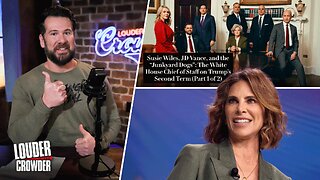 2:53:04
2:53:04
Steven Crowder
5 hours agoVanity Fair's Susie Wiles Hit Piece: Who's To Blame PLUS Special Guest Jillian Michaels
409K512 -
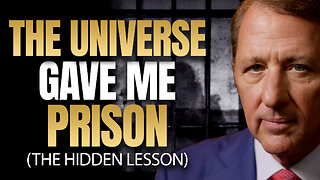 12:52
12:52
The Kevin Trudeau Show Limitless
4 hours agoBeyond Good And Bad: The Hidden Reality Code
2964 -
 LIVE
LIVE
The Boomer Effect
4 hours agoBridging the Divide: Manchin on Politics, Principles, & People First
54 watching -
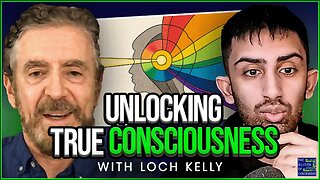 LIVE
LIVE
The Illusion of Consensus
1 hour agoYou’re Healing The Wrong Way - Meditation, Trauma & Awakening EXPLAINED | Loch Kelly
66 watching -
 1:17:06
1:17:06
The Rubin Report
4 hours agoLeftist Insults Jillian Michaels on Piers Morgan & It Gets Brutal Fast
56.5K23 -
 1:23:36
1:23:36
Sean Unpaved
3 hours agoMike McDaniel & Dolphins BENCH Tua Tagovailoa For Quinn Ewers! | UNPAVED
15.8K -
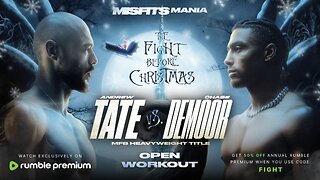 3:12:33
3:12:33
Misfits Mania
17 hours ago $28.11 earnedANDREW TATE VS CHASE DEMOOR OFFICIAL OPEN WORKOUT
209K23 -
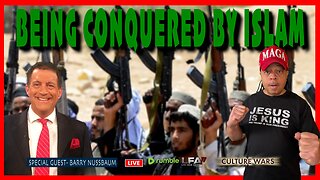 LIVE
LIVE
LFA TV
17 hours agoLIVE & BREAKING NEWS! | WEDNESDAY 12/17/25
1,957 watching